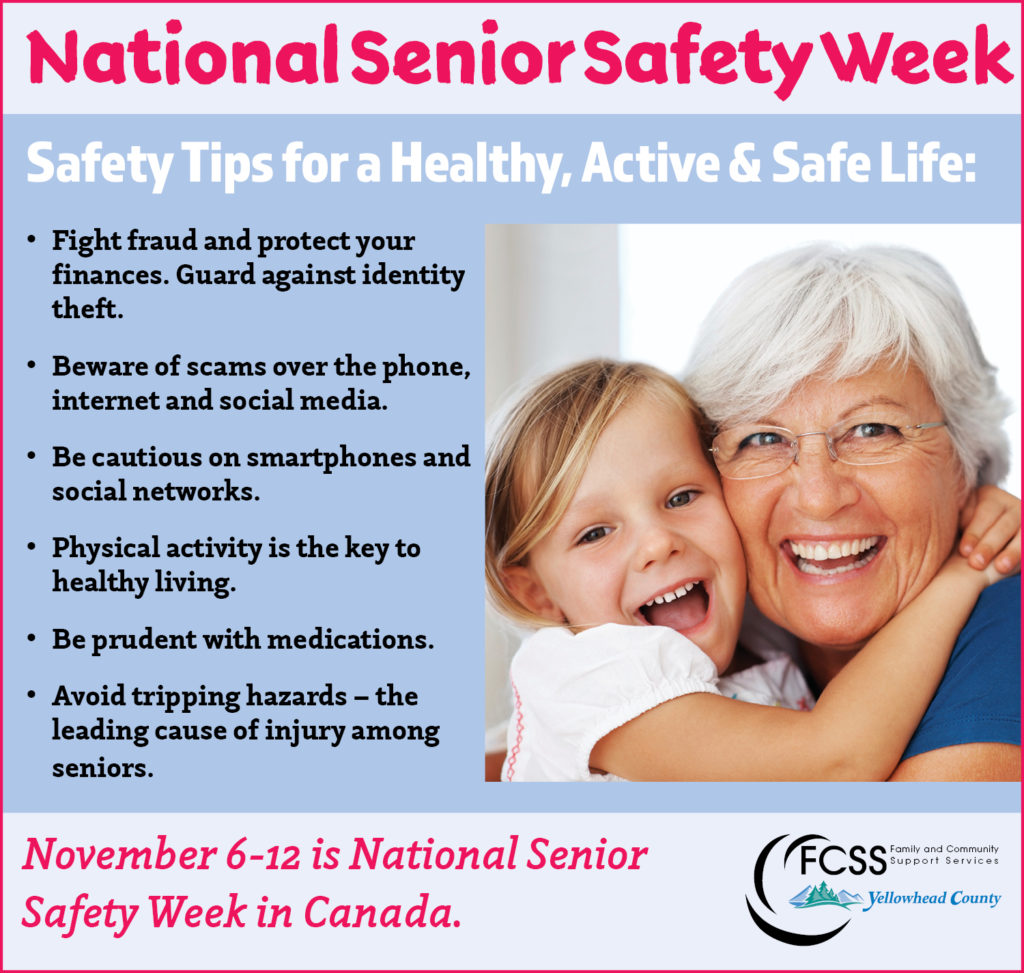November 6-12 is National Senior Safety Week in Canada, an initiative of the Canada Safety Council (CSC). As part of its mandate to keep mature Canadians healthy, independent and safe, the CSC raises awareness on a series of topics of concern to seniors, including fall prevention, drug safety, elder abuse and driving.
Safety Tips for a Healthy, Active, & Safe Life:
- Fight fraud and protect your finances. Guard against identity theft.
- Beware of scams over the phone, internet, and social media. (Tips here: https://www.telus.com/en/wise/resources/content/article/national-seniors-safety-week)
- Be cautious on smartphones and social networks.
- Physical activity is the key to healthy living.
- Be prudent with medications.
- Avoid tripping hazards – the leading cause of injury among seniors.
For many seniors, driving is one of the keys to an independent lifestyle. According to a 2017 online insurance company survey of 3,541 Canadian drivers, more than one-quarter said they want to keep their license past their 85th birthday.
There are several ways for retirees to keep their driving skills sharp. The Canadian Automobile Association (CAA) offers a handy “Driving Skills Review” as part of a tool kit for older drivers (this can be found at https://www.caa.ca/driving-safely/senior-drivers/driving-skills-review/)
1) Review driving skills on a regular basis; CAA offers initial online self-assessments (https://www.caa.ca/driving-safely/senior-drivers/assess-maintain-your-driving-skills/), cautioning that these are not meant to replace a discussion with your doctor.
2) If you take prescription or over-the-counter medications, (some of which can slow reaction time, blur vision or cause drowsiness), CAA recommends talking to your doctor and/or pharmacist about possible effects and/or adjustments.
3) While the CAA says that the single most effective way to manage slower reaction times is to stay physically and mentally fit, the organization also offers behind-the-wheel strategies, such as leaving more following distance between you and the driver ahead of you.
4) Consider avoiding busy high-speed highways and congested, rush-hour traffic, which can be highly stressful, says the CAA. Find alternative routes using local, lower-speed roads.
5) Plan your route ahead of time so last-minute driving decisions can be avoided.
6) The CAA recommends if you’re comfortable with night driving, in dim light, to focus on the edges or outlines of objects, as your eyes can pick up images more sharply than by looking directly at the object.
7) While making a left-hand turn (an area of higher accident rates for drivers 65 and over), CAA recommends signaling at least 50 metres before the intersection.
The CAA also offers valuable information on warning signs that driving habits should change, as well as how to talk to a loved one about finding alternatives to driving.


